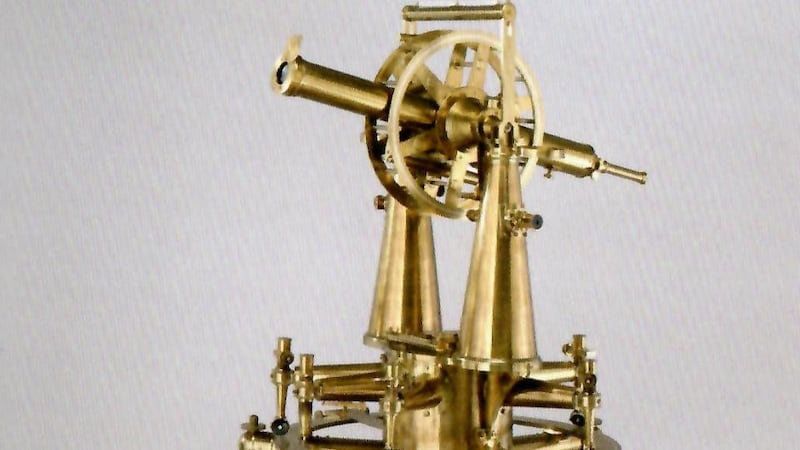On a glorious sunny June day we reached the summit of Céidín, south of the Glen of Imall, to find a triangulation station or trig pillar. These concrete pillars are found on many prominent peaks throughout Ireland, and were erected to aid in surveying the country.
The pillars are about four feet high on a wide base and taper towards a flat top with a mounting-plate to hold a theodolite. Trigonometrical stations are grouped together to form a triangulation network. Each pillar is in view of several others so that their relative positions may be determined.
The Ordnance Survey originally mapped Ireland in the 1820s. A re-triangulation of the country began in 1959, and the familiar concrete pillars were erected on many hilltops at this time. These iconic pillars were designed by Brigadier Martin Hotine, who was responsible for the re-triangulation of Britain in the 1930s.
Angles can be measured very precisely by taking theodolite sightings to distant peaks. In this way a network of triangles can be built up covering the entire country. Larger triangles can be subdivided into smaller ones, yielding a detailed mesh which facilitates fine-scale mapping.
If we know the length of one side of a triangle – the baseline – and the two angles at its ends, we can use trigonometry, the mathematics of triangles, to calculate the lengths of the other two sides.
Baseline
To provide a baseline, the Lough Foyle Base, which started at Magilligan and extended about 12km southwards to Ballykelly near Derry, was measured with great accuracy in 1828. This single measurement was sufficient to calculate the lengths of all sides of all the triangles in the network.
Errors due to inaccuracies in the baseline measurement amplify as more triangles are calculated. The Lough Foyle Base was remeasured in 1960 by the Ordnance Survey of Northern Ireland and the result differed from the 1828 value by only 2.5cm, a convincing demonstration of the precision of the original survey.
By 1846 the entire island of Ireland had been surveyed, and a series of about 2,000 maps at a scale of 6 inches to the mile had been published.
In the original survey spot heights were recorded relative to the Poolbeg datum. This was the level of low water spring tide at Poolbeg Lighthouse in Dublin Bay. Since 1959 heights have been given relative to mean sea level at Malin Head. As a result, heights marked on maps published since 1960 are 2.7 metres lower than on earlier maps.

Good visibility
From the top of Céidín we could see Mount Leinster, Mullaghcleevaun and several other trig stations. Of course, measuring angles by eye from a trig pillar was dependent upon good visibility. The carrying of heavy surveying equipment to a mountain top was an arduous task, often requiring the aid of donkeys.
With the arrival of the satellite era the entire process has been revolutionised. Thanks to modern instrumentation, aerial photography and GPS, surveying work that once took months or years can be carried out in a short time, and with much greater accuracy.
Still, the basic mathematical principles are unchanged, and triangulation remains at the heart of surveying. Although trig stations are now redundant, being unnecessary for modern surveying purposes, they are greatly loved by hikers and mountaineers as navigational aids and comfort blankets. It is always a pleasure to reach a summit and munch sandwiches while resting against one of these quirky monoliths.
Peter Lynch is emeritus professor at University College Dublin school of mathematics and statistics – he blogs at thatsmaths.com













